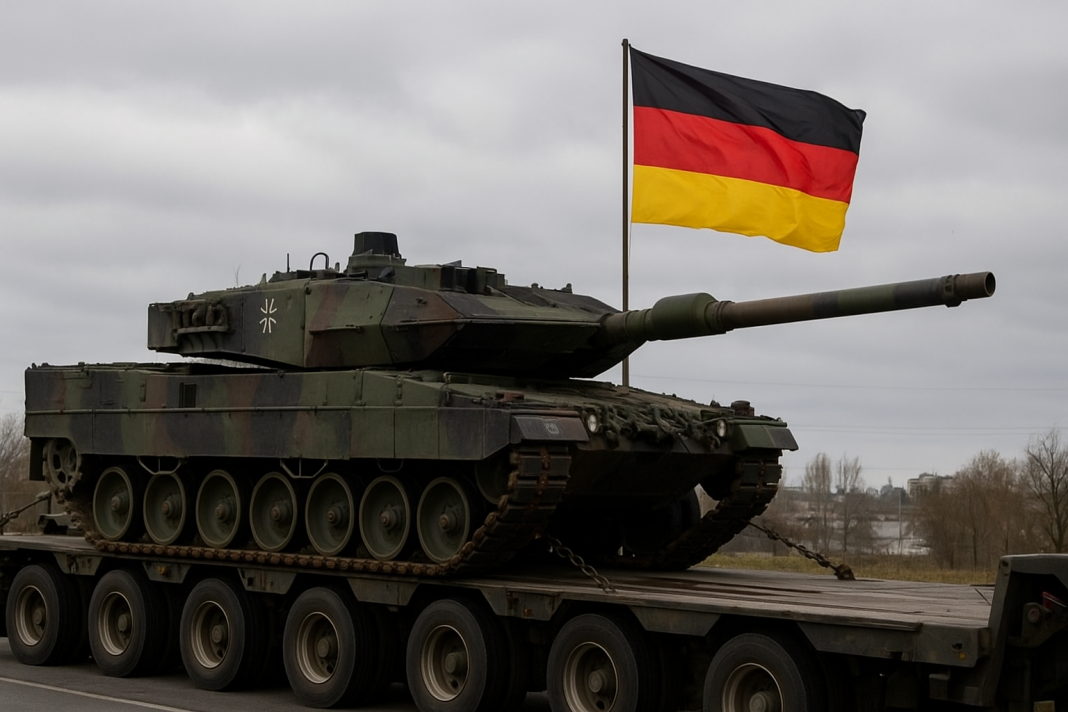A major new step in Germany’s support for Ukraine has been declared. It declared on Wednesday that it will provide a military aid package of up to USD 500 million in collaboration with a group of Ukraine’s Western partners. Ukraine will get this delivery via a recently established NATO supply channel.
Massive Joint Effort Behind the $500 Million Aid Package
The move comes as part of a broader effort by NATO countries to send large, coordinated shipments of weapons, ammunition, and other defense equipment. This system aims to speed up the delivery process and ensure that Ukraine receives exactly what it needs most urgently on the battlefield.
Earlier in the month, NATO began coordinating regular deliveries of major weapons packages. This shift followed a commitment from the Netherlands, which pledged 500 million euros (USD 582 million) worth of air defense systems, ammunition, and additional military aid packages. These deliveries mark a new stage in how NATO members work together to support Ukraine’s defense against ongoing attacks.
France Unleashes $2 Billion Military Aid Package for Ukraine
The NATO supply line connects suppliers directly with Ukrainian needs. Once they identify the priority equipment, allies locate the items and arrange transport, ensuring a steady and efficient flow of aid packages and other military resources.
Sweden and Nordic Partners Join the Aid Package Initiative
One day after the Netherlands made its pledge, Sweden announced it would contribute USD 275 million toward a joint effort with its Nordic neighbors — Denmark and Norway. Together, these countries are providing USD 500 million worth of air defense systems, anti-tank weapons, ammunition, spare parts, and another substantial military aid package.
This Nordic aid package makes up a large part of the coordinated deliveries that NATO’s new system manages. While allies have scheduled the first two deliveries of equipment — mostly purchased from suppliers in the United States — for this month, they expect the Nordic contribution to arrive in September.
Hungary Blocks Critical EU Military Aid to Ukraine, Sparking Tensions
Germany’s defense and foreign ministries emphasize providing essential air defense capabilities. Ukraine urgently needs these systems to protect its cities and infrastructure from ongoing air strikes. The attacks have caused significant destruction and loss of life, particularly in urban areas far from the front lines.
According to the United Nations, Russia’s bombardment of civilian areas has killed more than 12,000 Ukrainian civilians since the beginning of the full-scale invasion in February 2022. The steady supply of air defense systems through these aid packages aims to reduce these losses by giving Ukraine more tools to intercept incoming missiles and drones.
Germany’s Role and Total Contribution So Far
Since the war began, Germany has already provided or promised to provide Ukraine with military assistance totaling about 40 billion euros (USD 47 billion). This includes a wide range of equipment such as tanks, armored vehicles, artillery systems, air defense weapons, and ammunition.
The latest aid package, coordinated through the new NATO supply line, shows the country’s continued involvement in large-scale defense support. While Germany did not name the exact group of countries it will work with for this delivery, the collaboration highlights a growing trend of joint operations among NATO members to meet urgent needs quickly. NATO members choose the equipment based on Ukraine’s priority requests. NATO then identifies which member nations can supply these items and arranges the fastest possible delivery.
US Aid Freeze Cripples Ukraine’s Defense Followed by Billions in Military Support Blocked by EU
This approach helps avoid delays and ensures that resources — including aid packages — reach the front lines in time to make a difference. Germany’s commitment reflects both the scale of its support and the importance of coordinated action among allies. With the war continuing to place heavy demands on Ukraine’s defense, the creation of an organized and predictable supply route through NATO could play a crucial role in maintaining a steady flow of essential military equipment.
By combining resources, countries like Germany, the Netherlands, Sweden, Denmark, and Norway are contributing to a collective defense effort that addresses Ukraine’s most pressing needs. The coordinated aid packages — ranging from advanced air defense systems to basic ammunition supplies — demonstrate the scale and variety of support being delivered.
